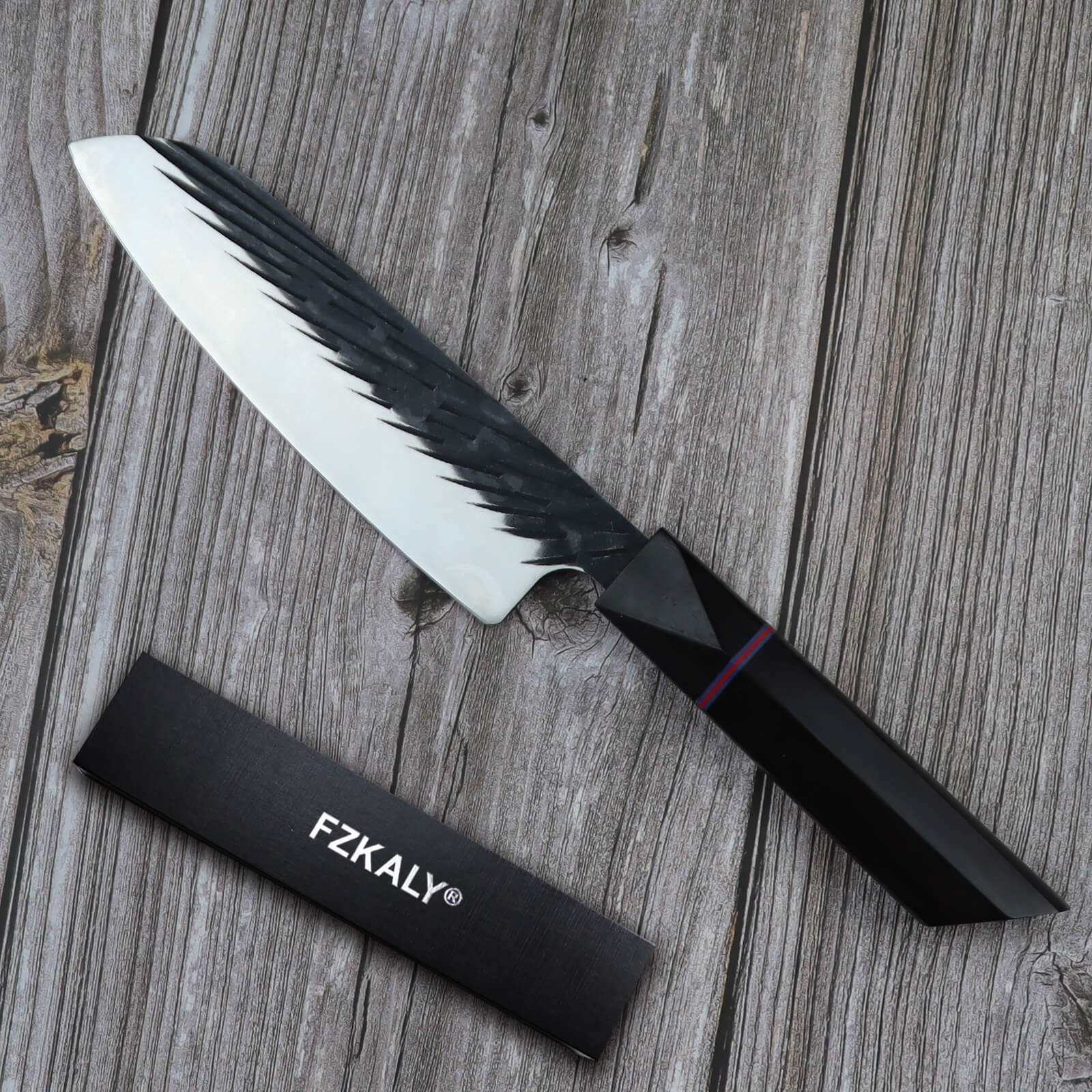What is a Santoku Knife?
A Santoku knife is a versatile kitchen tool that originated from Japan. Its name, "Santoku," translates to "three virtues" ( meat, fish, and vegetables) or "to solve three problems," reflecting its ability to handle three main tasks: slicing, dicing, and mincing. This knife has a straight edge with a narrow sheep's foot blade, combining the features of a traditional Japanese vegetable knife (Nakiri) and a Western meat knife (Gyuto). This unique shape allows the Santoku to excel at cutting proteins and vegetables precisely and easily. It's a favorite among novice and experienced chefs for its all-purpose functionality. If you want to enhance your knife collection, the Santoku is highly recommended.
What Does a Santoku Knife Look Like?
Blending elements of both Western and Japanese knife design, a Santoku typically boasts a distinctive appearance characterized by a sheep's foot blade with a straight cutting edge and a flat spine that curves down to meet the sharp, angled tip. The blade tends to be wider near the handle and gradually tapers towards the tip, facilitating precise slicing, dicing, and mincing of various ingredients.
Compared with a Western chef's knife, the Santoku's blade is generally shorter, typically ranging from 5 to 7 inches in length.
Crafted from high-quality, hard steel, the Santoku blade is thinner and lighter compared to its Western counterpart. Some Santoku knives feature hollow edges, known as Granton edges, along the blade to prevent food from sticking while cutting.
The handle of a Santoku can vary in material, including wood, G10, plastic, or composite materials, designed to provide a comfortable grip and optimal balance. Most Santoku knives feature full tang construction, where the blade extends through the handle, enhancing strength and stability.
What Are Santoku Knives Used for?
Santoku knives are like the Swiss Army knives of the Japanese kitchen, perfect for slicing, dicing, and chopping veggies, fruits, and meats. But they're not just about the basics—they're also great for delicate jobs like mincing herbs or garlic. Need to slice up some sashimi? Dice onions like a pro? Or whip up some quick herb seasoning? A Santoku knife is your go-to buddy. Whether you're prepping sushi, garnishing veggies, or mincing meat, a top-notch Santoku knife guarantees chef-worthy results with its super sharp and versatile blade.
Santoku VS Chef Knife
Most people may have the same question, that is What's the difference between a chef's knife and a santoku knife? Let's make it clear today! The main differences between a chef's knife and a Santoku knife lie in their design and cutting techniques.
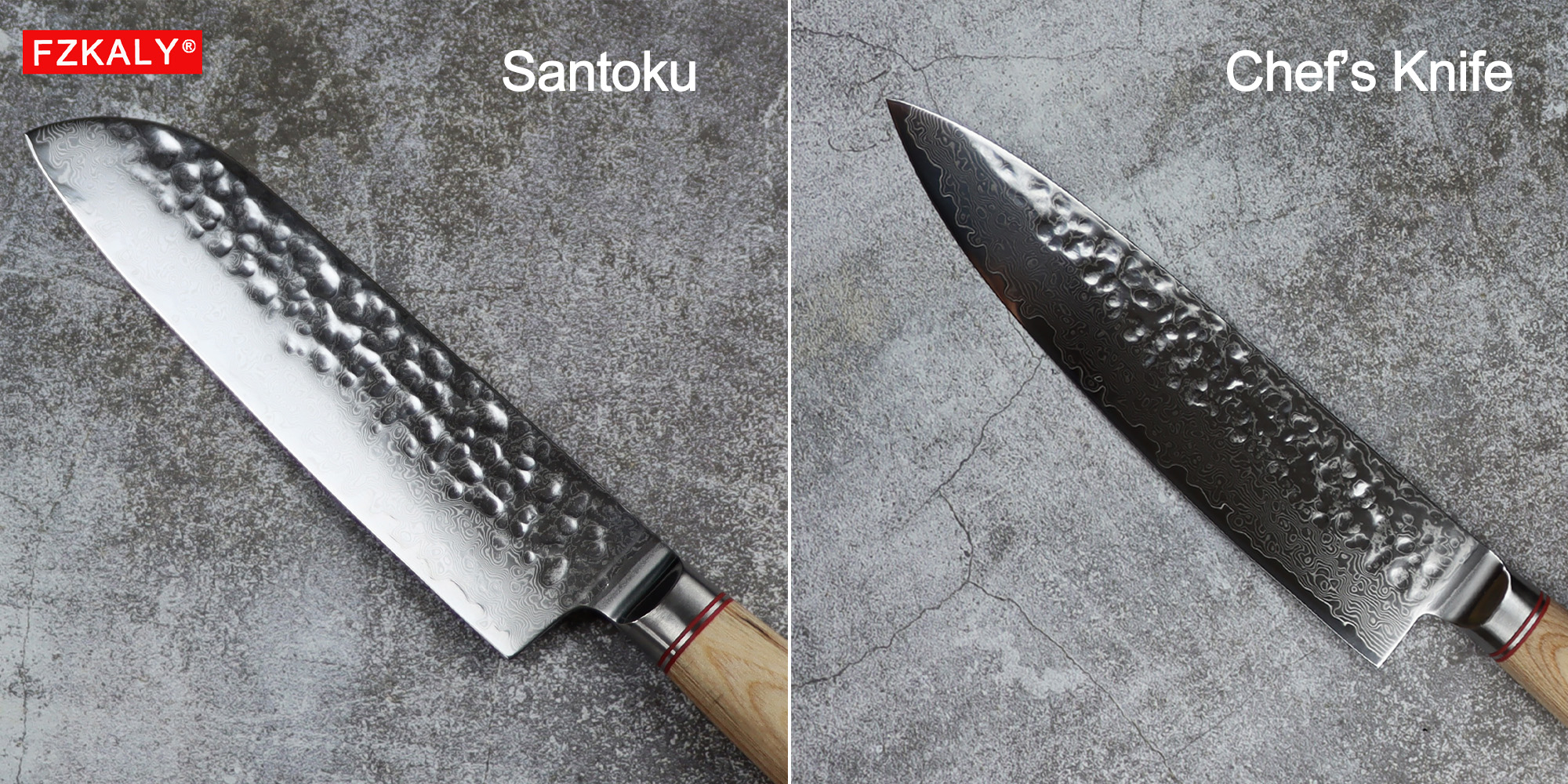
1. Blade Shape and Design
Chef's Knife: Typically features a longer, curved blade, idealy around 8" inches in length, with a double-beveled edge for symmetrical tapering. This curved design enables a rocking motion while chopping.
Santoku Knife: Contrarily, a Santoku knife often boasts a taller, flatter blade with an asymmetrical bevel, lacking the curved edge of a chef's knife. This shape facilitates precise, downward strokes, perfect for sharp, efficient cuts during prep work.
2. Size and Weight
Chef Knife: Tends to be larger and heavier, with longer blades ranging from 6 to 10 inches, making them versatile for various kitchen tasks.
Santoku: Conversely, Santoku knives are typically smaller, ranging from 5 to 7 inches in blade length. Their lighter weight reduces forearm fatigue during extended use, offering more control for intricate cutting.
3. Blade Profile
Chef's Knife: The blade often curves upwards, creating a thicker, heavier spine, ideal for the rocking method of cutting.
Santoku Knife: In contrast, the Santoku knife boasts a sheep's foot profile, with a straighter bottom edge compared to the curved blade of a chef's knife. This design enables efficient single downward cuts, rather than the rocking motion associated with chef's knives.
4. Tip Shape
Chef's Knife: Typically features a pointed, tapered tip, allowing for precise piercing and slicing.
Santoku Knife: Usually has a shorter, more rounded tip, minimizing the risk of unintentional piercing.
5. Weight and Handling
Chef's Knife: Often heavier, providing stability and power.
Santoku Knife: Tends to be lighter, offering agility and control due to thinner blade spines and overall lighter construction.
6. Cutting Technique
Chef's Knife: Designed for a rocking motion, versatile for various cutting styles.
Santoku Knife: Primarily used with a straight up-and-down chopping motion, ideal for precision slicing, dicing, and mincing.
Nakiri VS Santoku
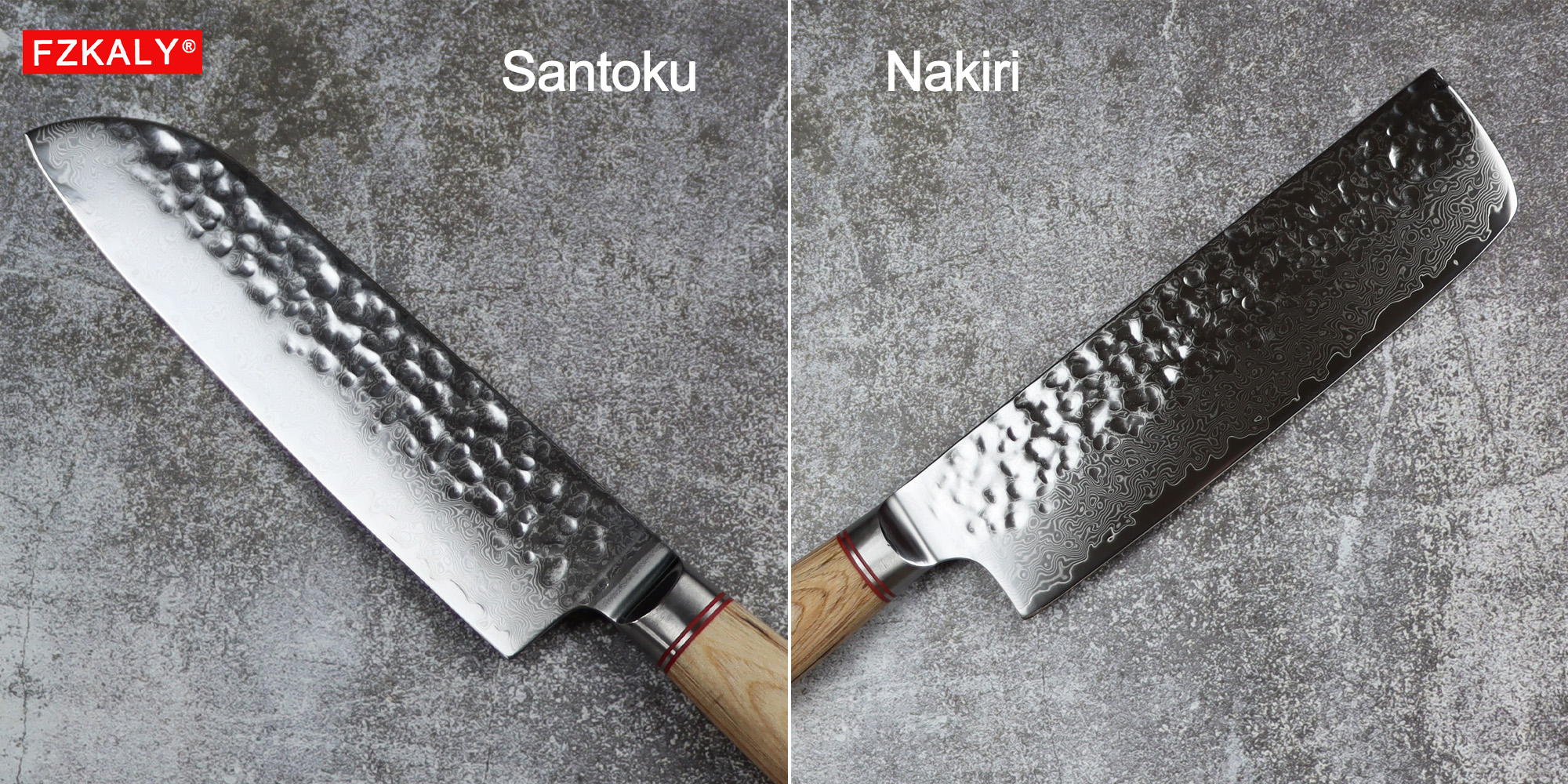
1. Blade Design
Nakiri Knife: The Nakiri knife has a straight, double-edged blade with a flat tip. It's great for precise cuts on veggies.
Santoku Knife: The Santoku knife has a wider, curved blade with a sheep's foot tip. It's versatile for slicing veggies and meats with ease.
2. Cutting Technique
Nakiri Knife: Use the Nakiri knife with a straightforward up-and-down chopping motion, perfect for veggies.
Santoku Knife: The Santoku knife works well for various cutting techniques like slicing, dicing, and mincing.
3. Versatility
Nakiri Knife: It's primarily designed for vegetables, even tough ones like squash or sweet potatoes.
Santoku Knife: While it's good for veggies, its wider blade also makes it suitable for slicing meats and fish.
4. Blade Thickness and Weight
Nakiri Knife: It's light and has a thin blade, offering precise control for vegetable cuts.
Santoku Knife: Slightly heavier with a thicker blade, providing stability for cutting meats and denser ingredients.
5. Personal Preference
Choose based on what you cook most. If it's mainly veggies and you prefer straight chopping, go for the Nakiri. If you want a more versatile knife for both veggies and meats, the Santoku is a great option.
Gyuto VS Santoku
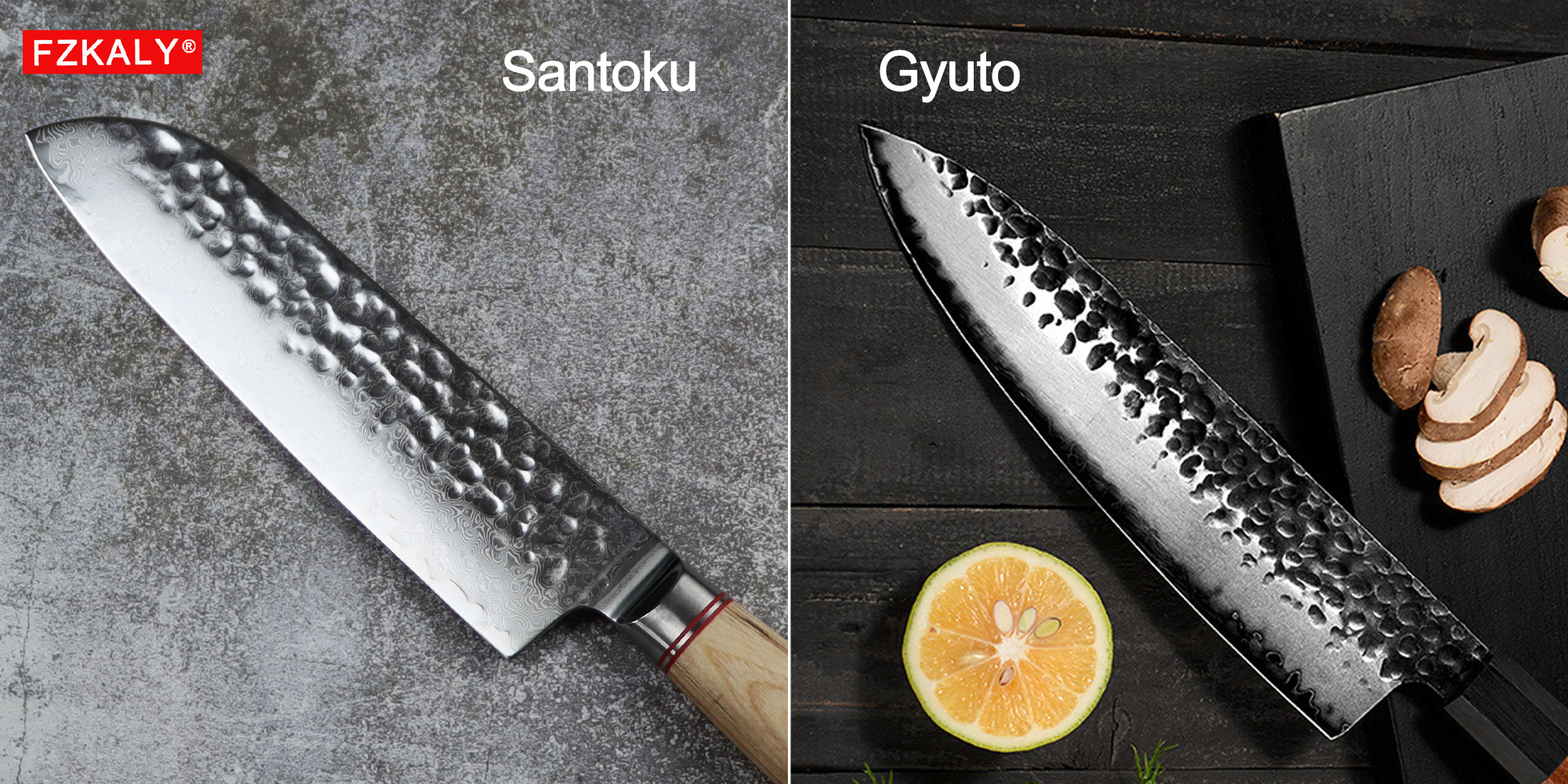
Both are Japanese knives. The Santoku boasts a taller blade, providing ample knuckle clearance and facilitating precise guidance during cutting. Its curved pointed tip enhances durability while sacrificing a touch of agility. This knife excels in efficient cutting, especially when maintaining a parallel blade edge to the cutting board. Conversely, the Gyuto offers versatility, adeptly handling various kitchen tasks with its nimble, narrower blade, albeit potentially requiring slight adjustments for knuckle clearance during chopping.
How to Sharpen a Santoku?
When choosing a sharpening tool, consider factors such as your skill level and your preferred sharpening method. Whetstones offer control and versatility, sharpening systems provide consistency, electric sharpeners offer convenience, honing rods maintain sharpness, and pull-through sharpeners are handy for quick touch-ups. Select the tool that best suits your needs and preferences to keep your knives sharp and ready for use.
Care and Maintenance of Santoku Knives
Proper care and maintenance are essential to keep Santoku knives in optimal condition. Regular sharpening and honing will help maintain their sharpness and performance. After each use, clean the knife with mild soap and warm water, then dry it thoroughly to prevent rust and corrosion. Store your Santoku knife in a knife block or sheath to protect the blade and ensure its longevity.
Do You Need a Santoku Knife?
Compared to a chef's knife, the Santoku's nimble design offers easier handling, particularly beneficial for individuals with smaller hands. While not an essential tool, incorporating a Santoku knife into your collection introduces variety and balance. The Santoku's nimbleness and shorter blade provide a distinct feel and functionality, making it a valuable addition to any culinary toolkit.
Choosing the Right Santoku Knife
When selecting a Santoku knife, consider factors such as blade material, length, and handle design. Opt for a knife that feels comfortable in your hand and suits your cutting style.
What Purpose do the Dimples Serve on a Santoku Knife?
The dimples on a Santoku knife, also called granton edges or kullens, have a key function. They're there to reduce friction and keep food from sticking to the blade during cutting. This design ensures smoother, more precise slicing, making the Santoku knife perfect for effortlessly preparing a variety of ingredients. Plus, the dimples create air pockets between the blade and the food, helping slices to release easily and enhancing cutting performance overall.
Can I Use a Santoku to Cut Meat?
Yes, absolutely! A Santoku knife is great for slicing meat, whether it's cooked or raw. Its sharp blade and ergonomic design make it perfect for cutting through different types of meat with precision. Whether you're working with poultry, beef, pork, or other meats, a Santoku knife can handle the job effortlessly. Just remember, Though it can cut chicken bones, it's not designed for cutting through bones; leave that to a butcher's cleaver.
Add a Santoku Knife to Your Kitchen
Without a doubt, Fzkaly crafts some of the finest Santoku knives available. Each blade is meticulously crafted from top-grade high-carbon stainless steel or Damascus steel, ensuring razor-sharp precision with every cut. Effortlessly tackle a variety of kitchen tasks, from slicing delicate vegetables to precisely dicing meats and fish. With a Fzkaly Santoku knife in hand, you'll breeze through your culinary creations with ease.

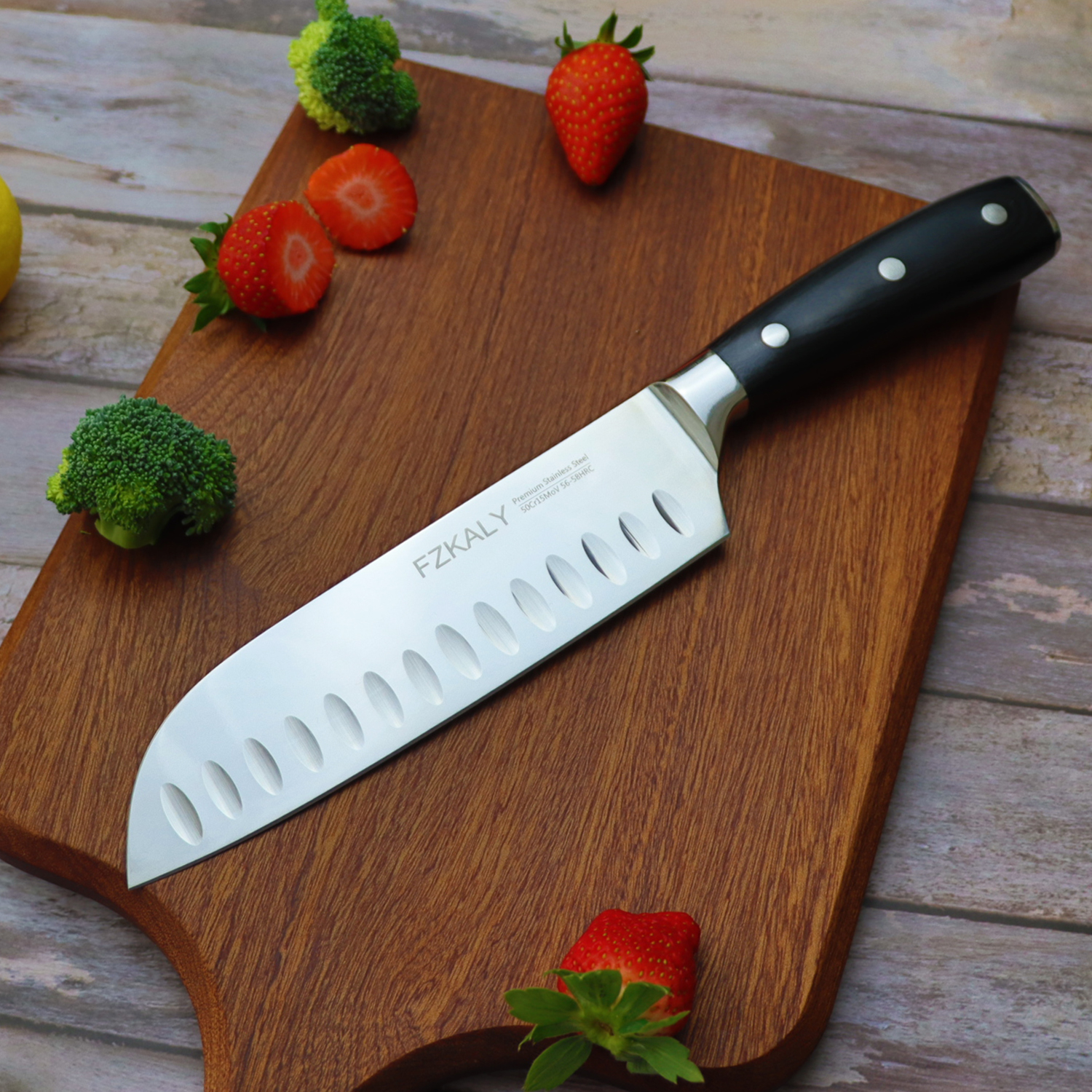
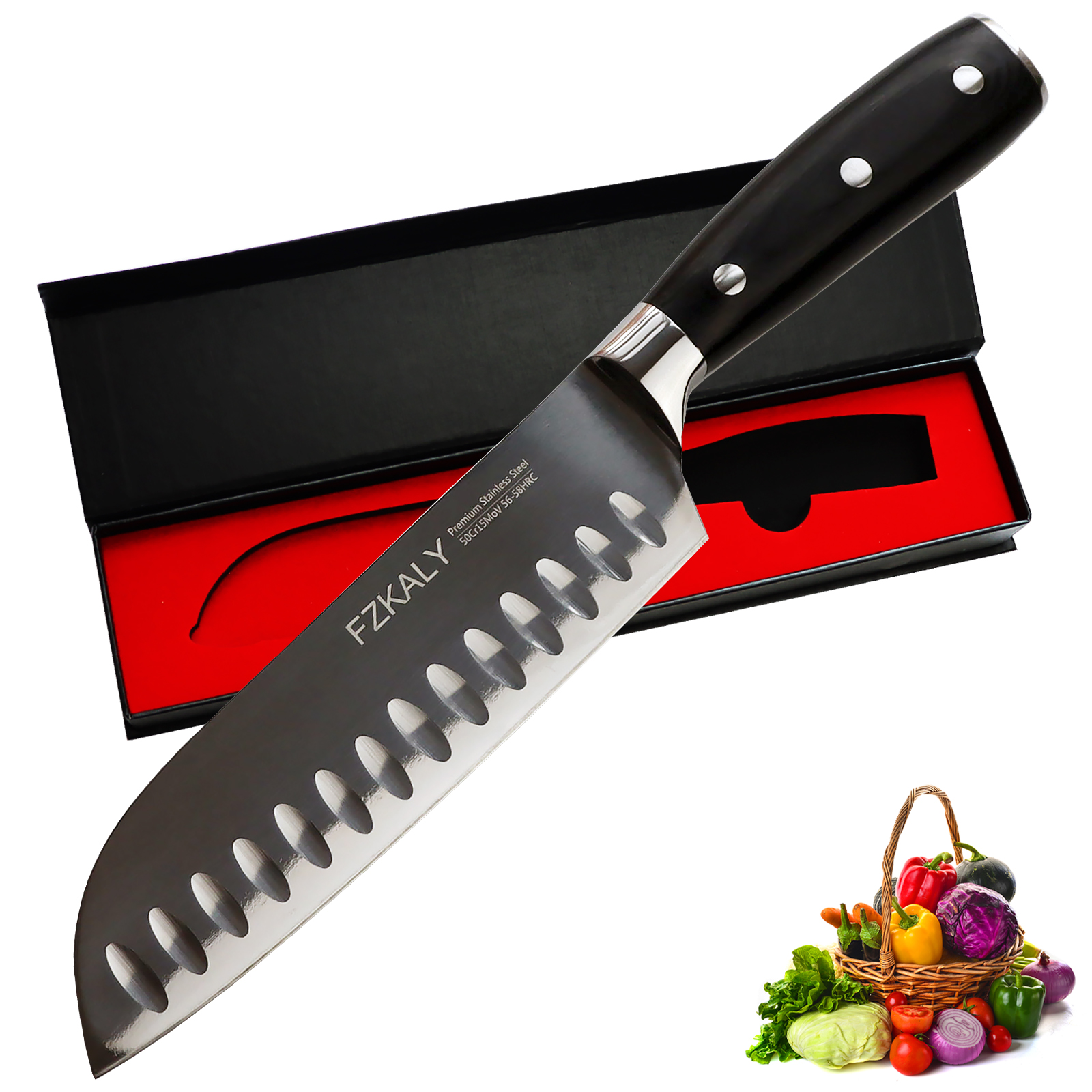
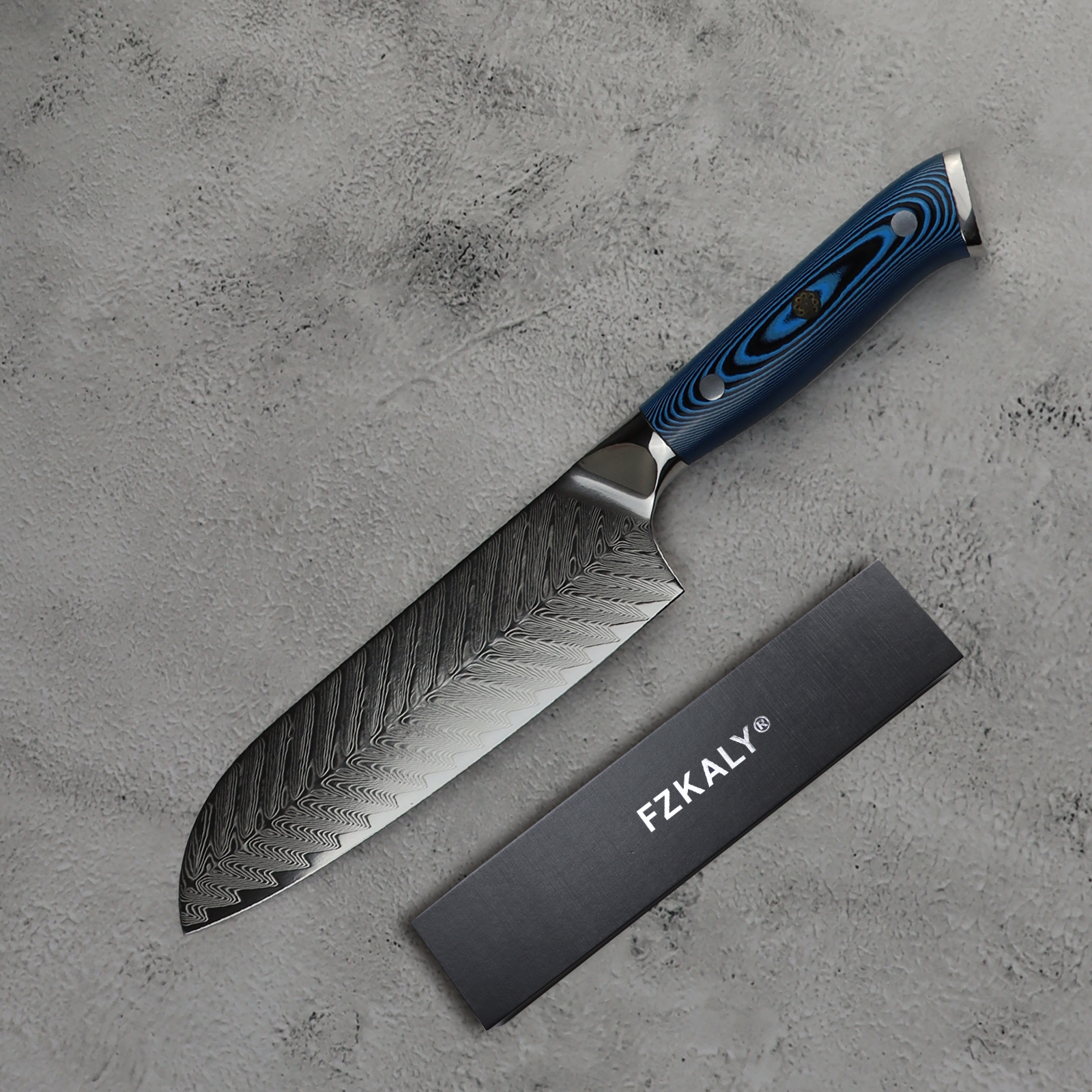
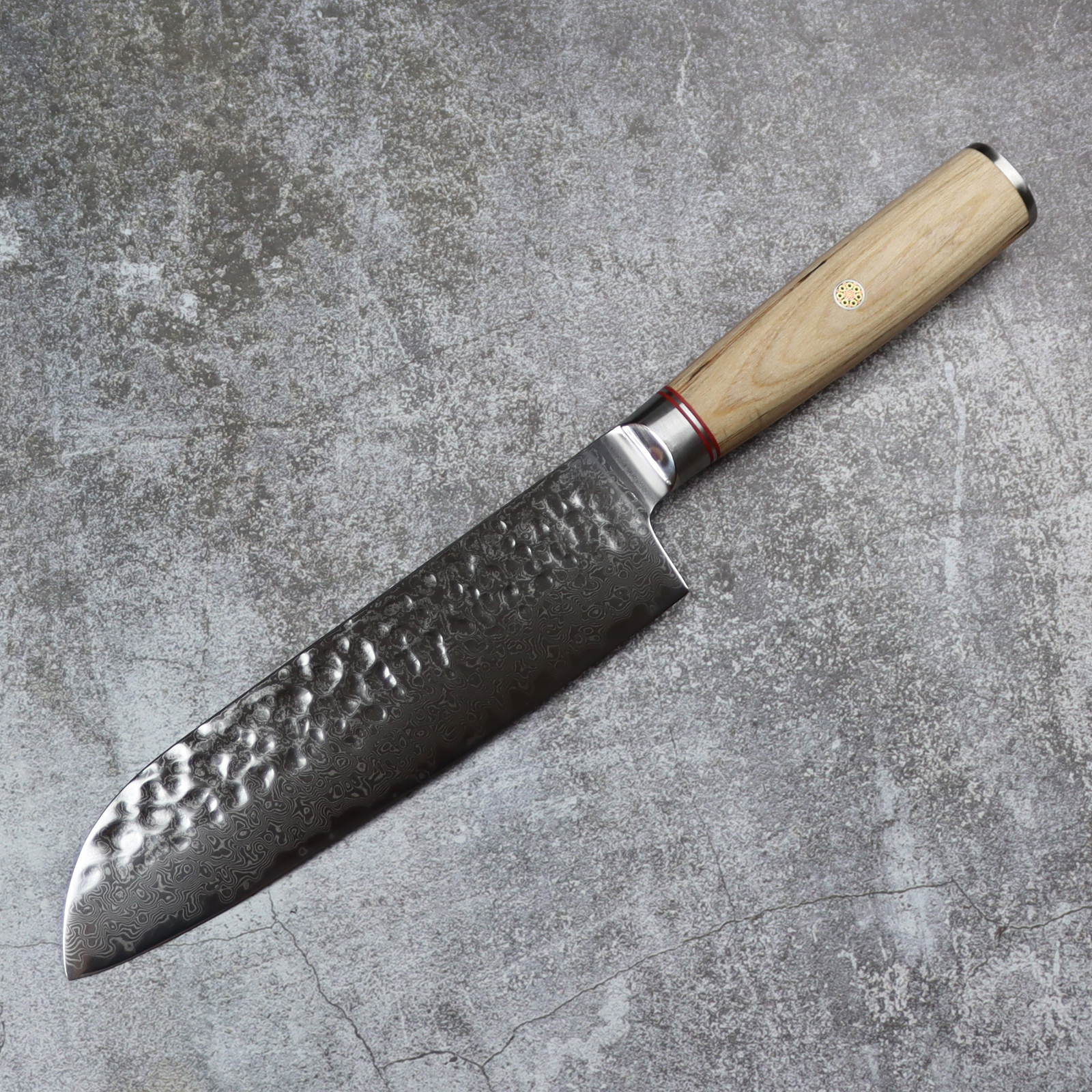
.jpeg?w=1000&h=1000)
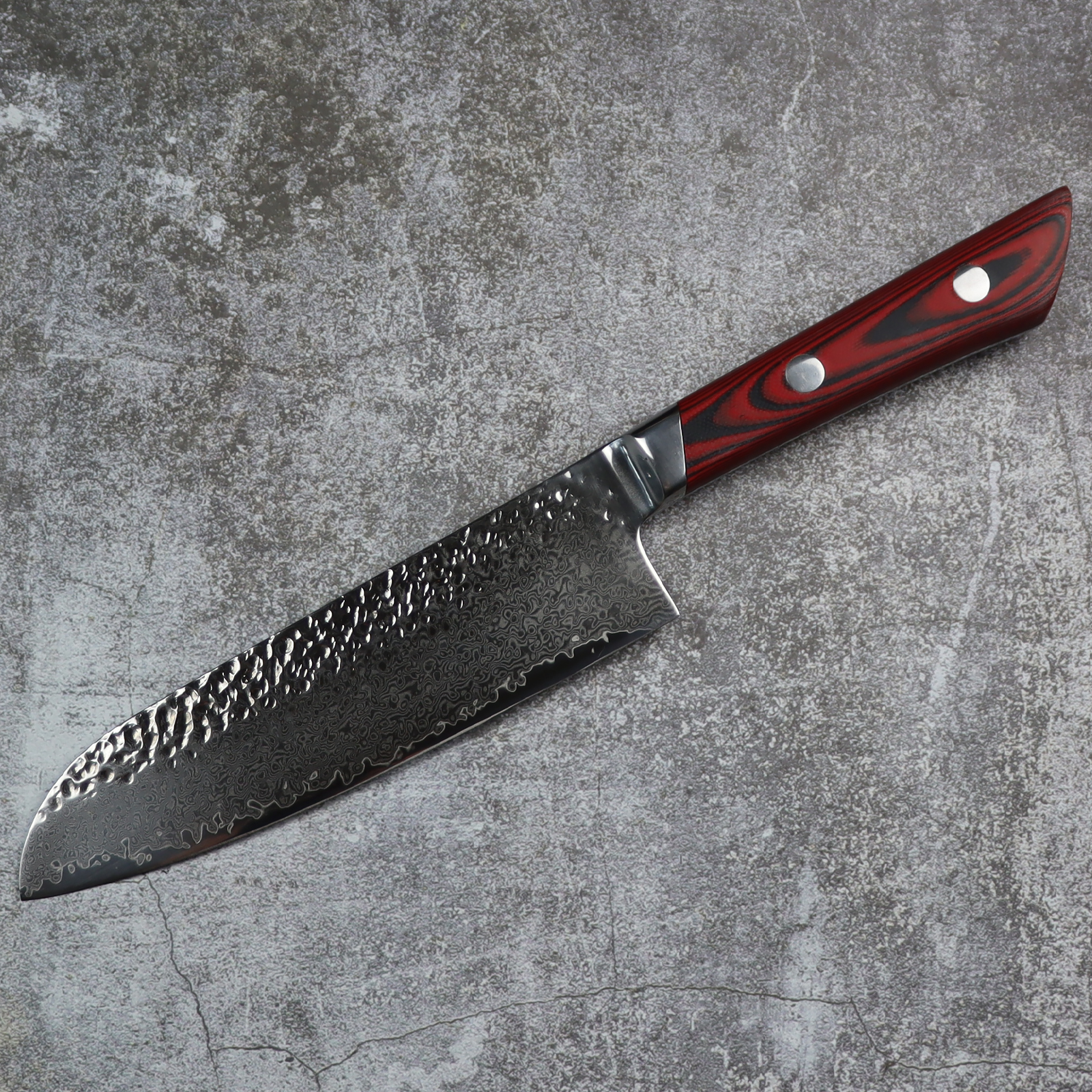
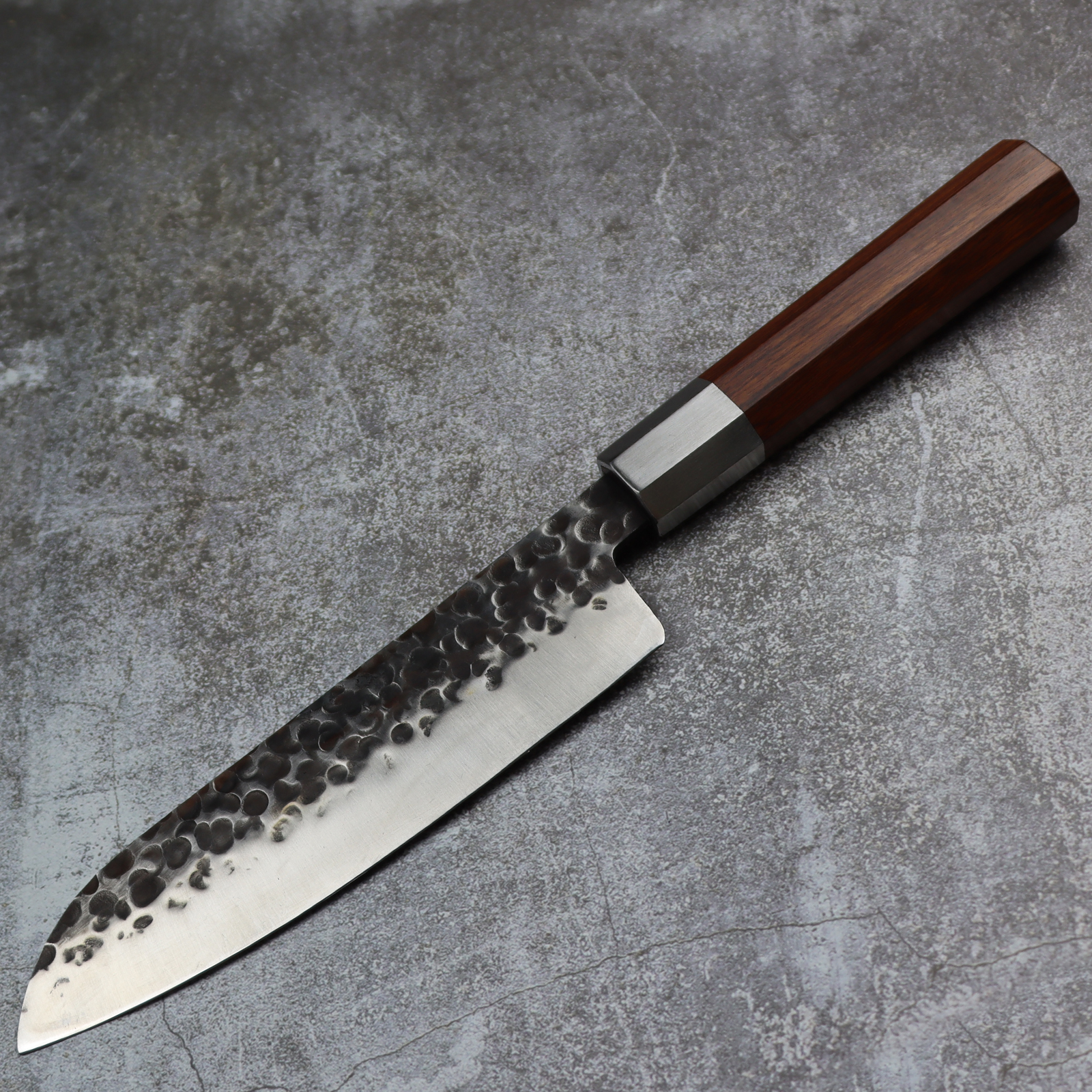
.jpeg?w=1600&h=1600)
